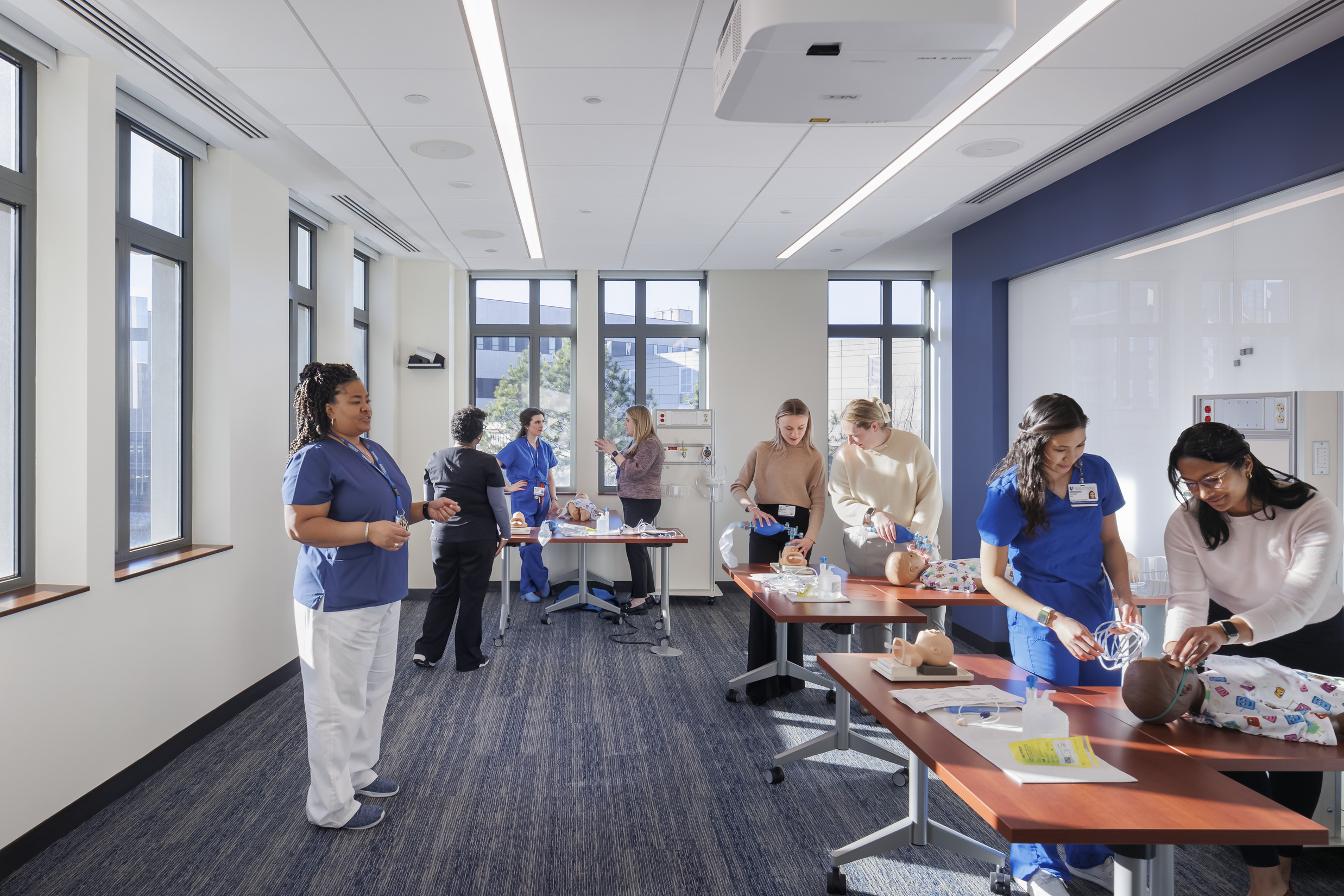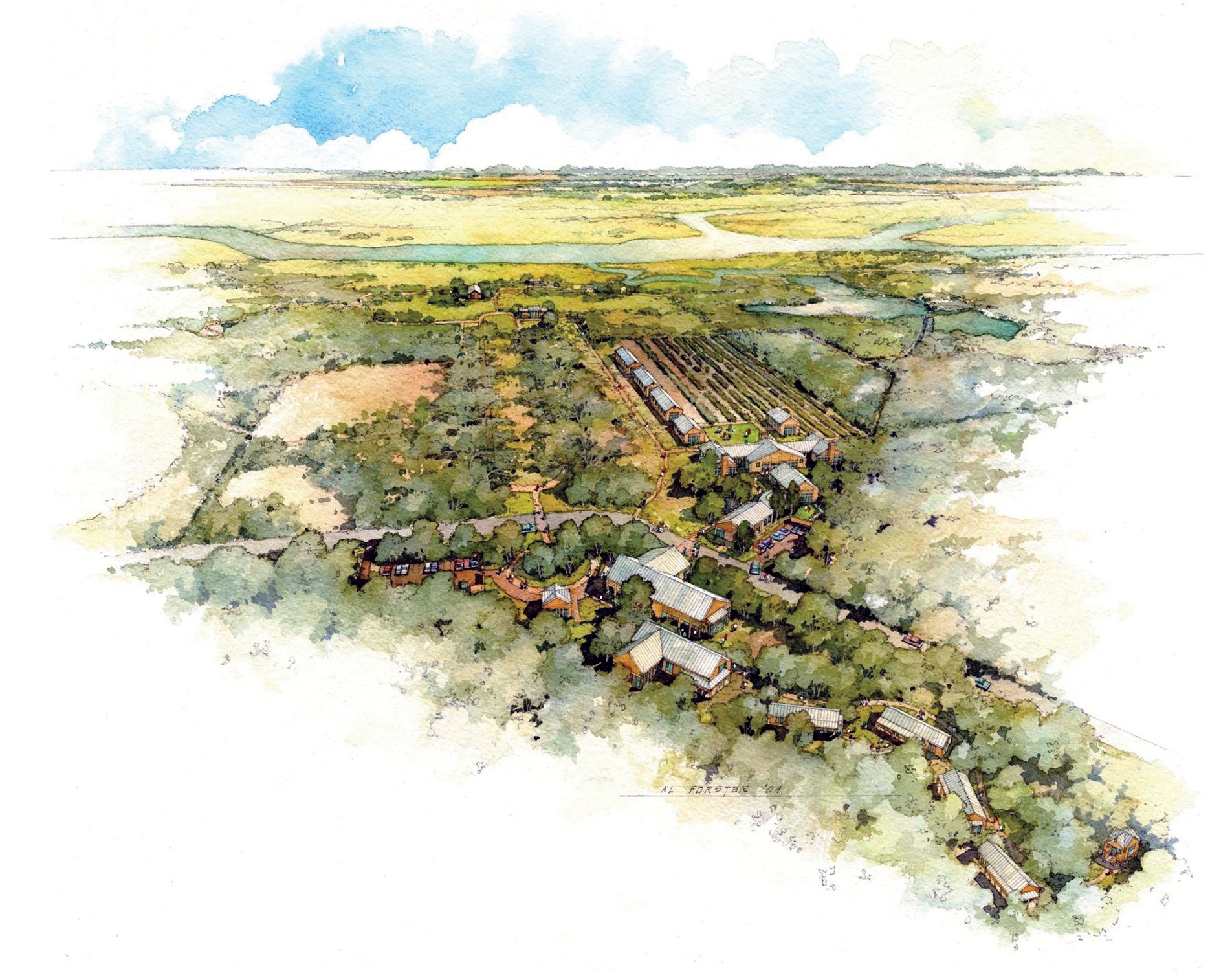This site uses cookies – More Information.
School of Nursing and Center for Interprofessional Education and Care
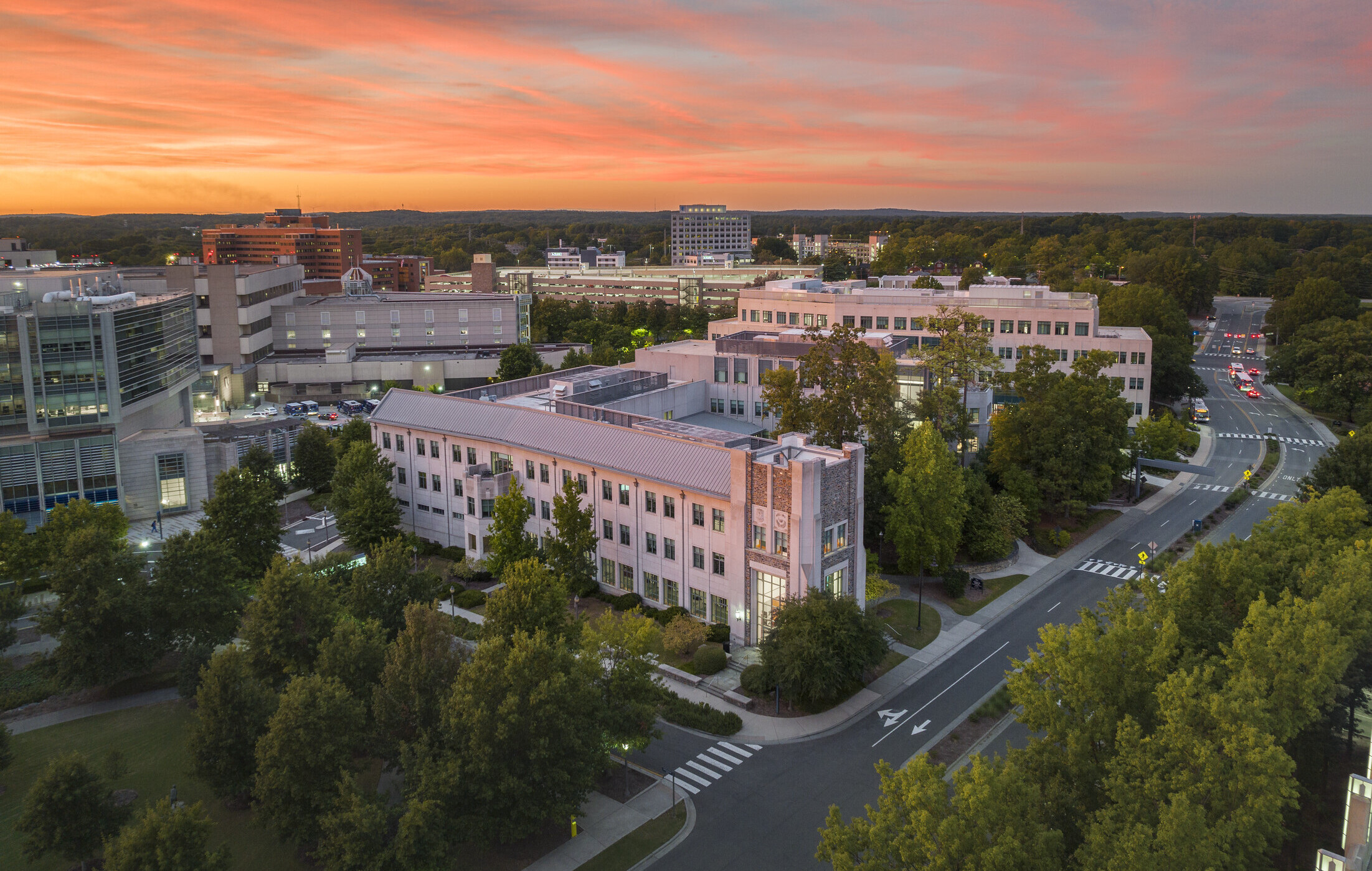
Center for Interprofessional Education and Care: 104,000 GSF
Center for Interprofessional Education and Care: LEED Gold
The Duke University Medical Center has long been admired for its celebrated programs and community of distinguished scholars and clinicians. Ayers Saint Gross was commissioned to design a new facility for the School of Nursing with the goal of uniting programs previously spread across campus into a single, iconic building with the potential for future expansion.
Five years after the first phase opened, a meteoric growth of the school’s enrollment necessitated an addition and Ayers Saint Gross continued to work with the university to design a facility for the Department of Physical Therapy and Occupational Therapy. The expansion connects to the original complex and integrates active learning classrooms, a collaborative tiered lecture hall, physical therapy and occupational therapy skills labs, a standardized patient suite, and a Health Innovation Lab for simulation, research, and interprofessional collaboration.
The holistic vision for the School of Nursing and the Center for Interprofessional Education and Care affirms Duke University’s place as a national leader in interdisciplinary nursing education.
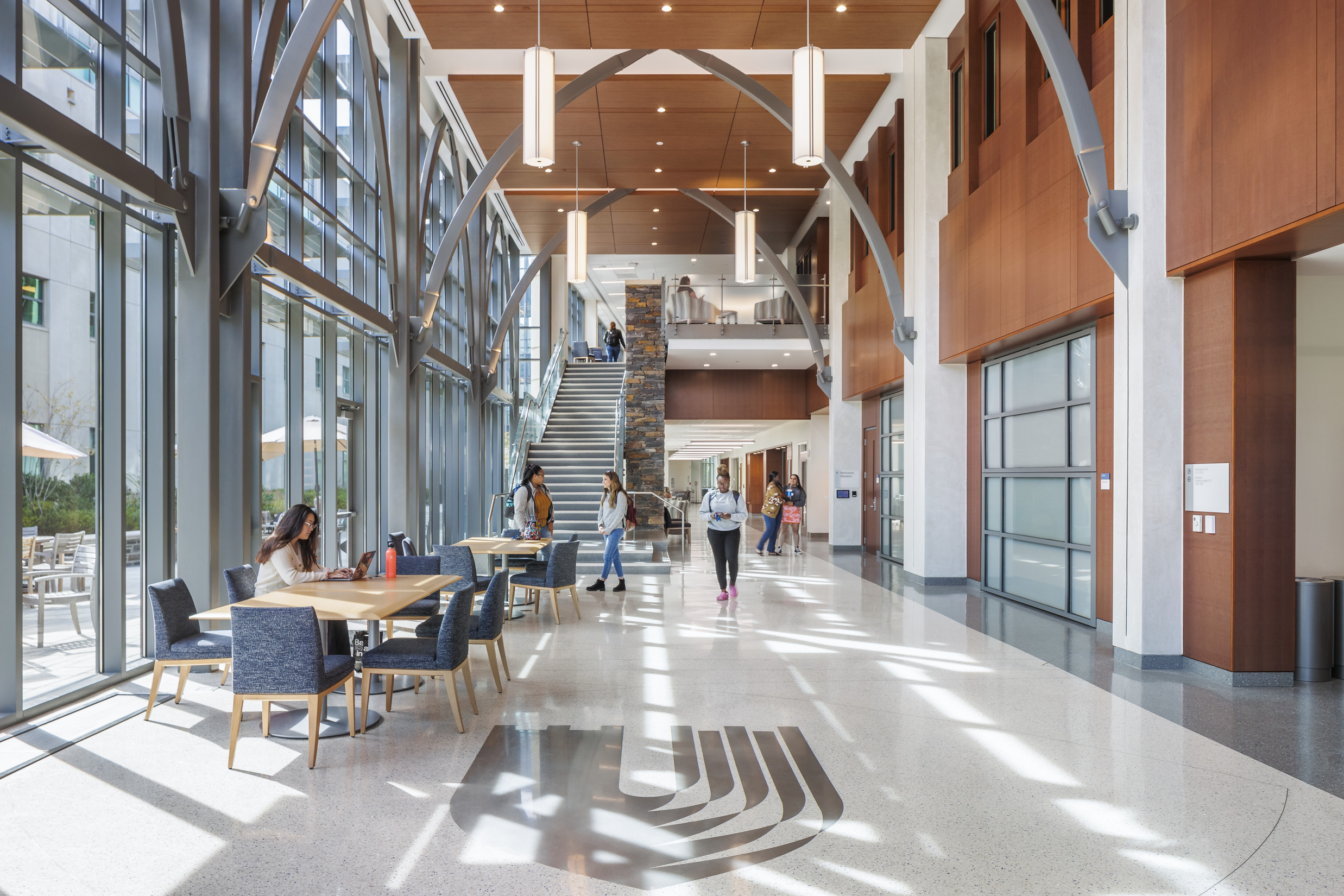

Phase One: Building the Foundation
In 2001, Ayers Saint Gross was awarded the commission to design a new School of Nursing facility to realize Duke’s vision to create an iconic identity that exemplified its transformation and potential. A primary motive for the initial Phase One project was to unite the school’s programs and space, previously spread across campus, into one new facility located within the Duke University Medical Campus.
Completed in 2005, the Christine Siegler Pearson Building is situated on a beautifully wooded two-acre site at the heart of the thriving and ever-growing Medical Campus. The architectural vocabulary is rooted in the collegiate Gothic vernacular of Duke’s historic campus, reinterpreted in a contemporary expression.
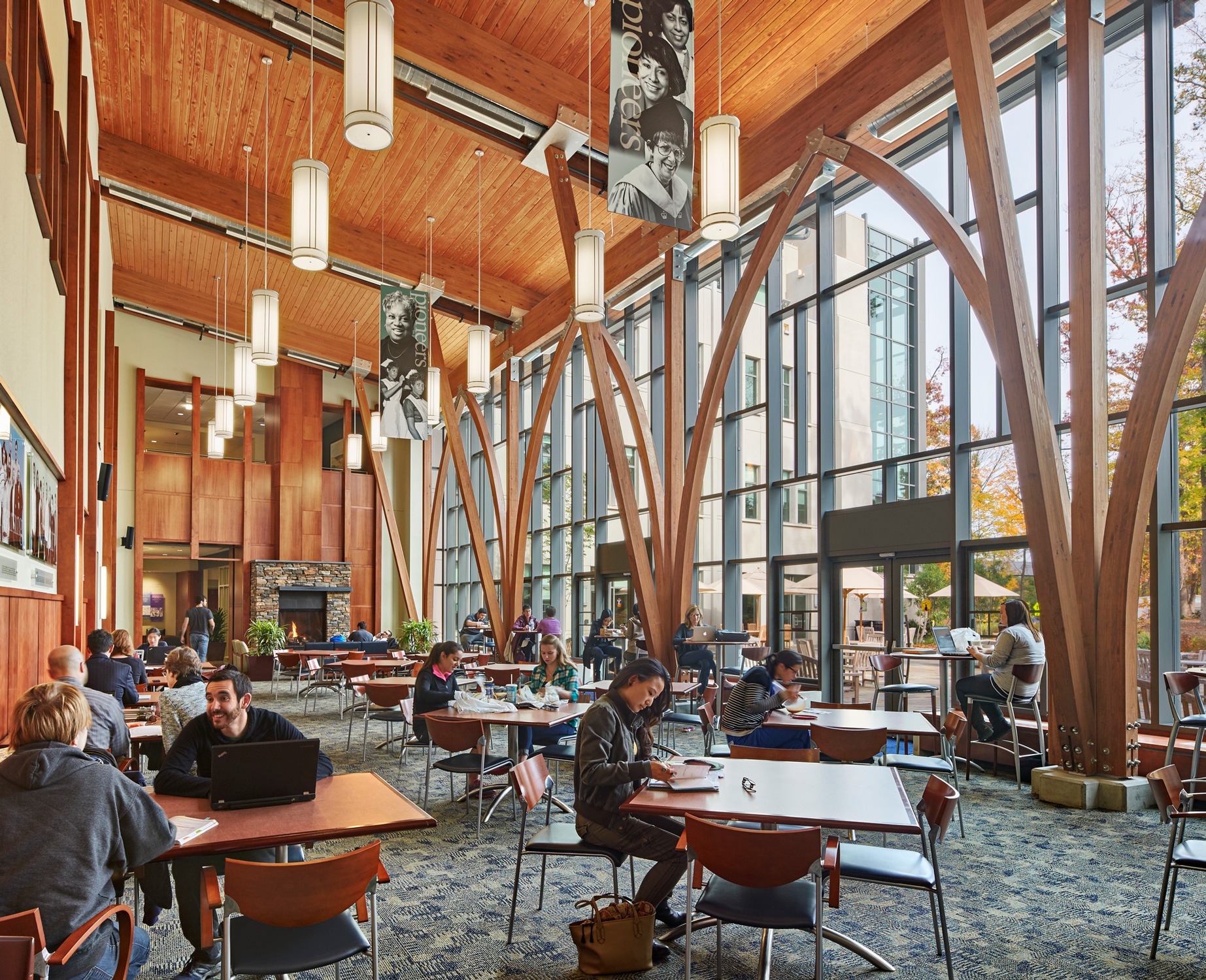
A highlight of the School of Nursing is the commons: a two-story “living room” where students and faculty come together to collaborate, share experiences, socialize, and study. The two-story glass enclosure looks out upon a carefully landscaped forest, purposefully blurring the distinction between inside and out. An outdoor terrace extends the “living” space into the courtyard, which has a mix of mature trees and planted landscape.
Elsewhere, the building accommodates trailblazing spaces in nursing education. The lower floor houses instructional spaces including an auditorium, a case study room, and several flat floor flexible classrooms. Clinical learning spaces including skills labs and a simulation suite are consolidated on the second floor, while faculty and senior administration offices are located on the second and third floors.
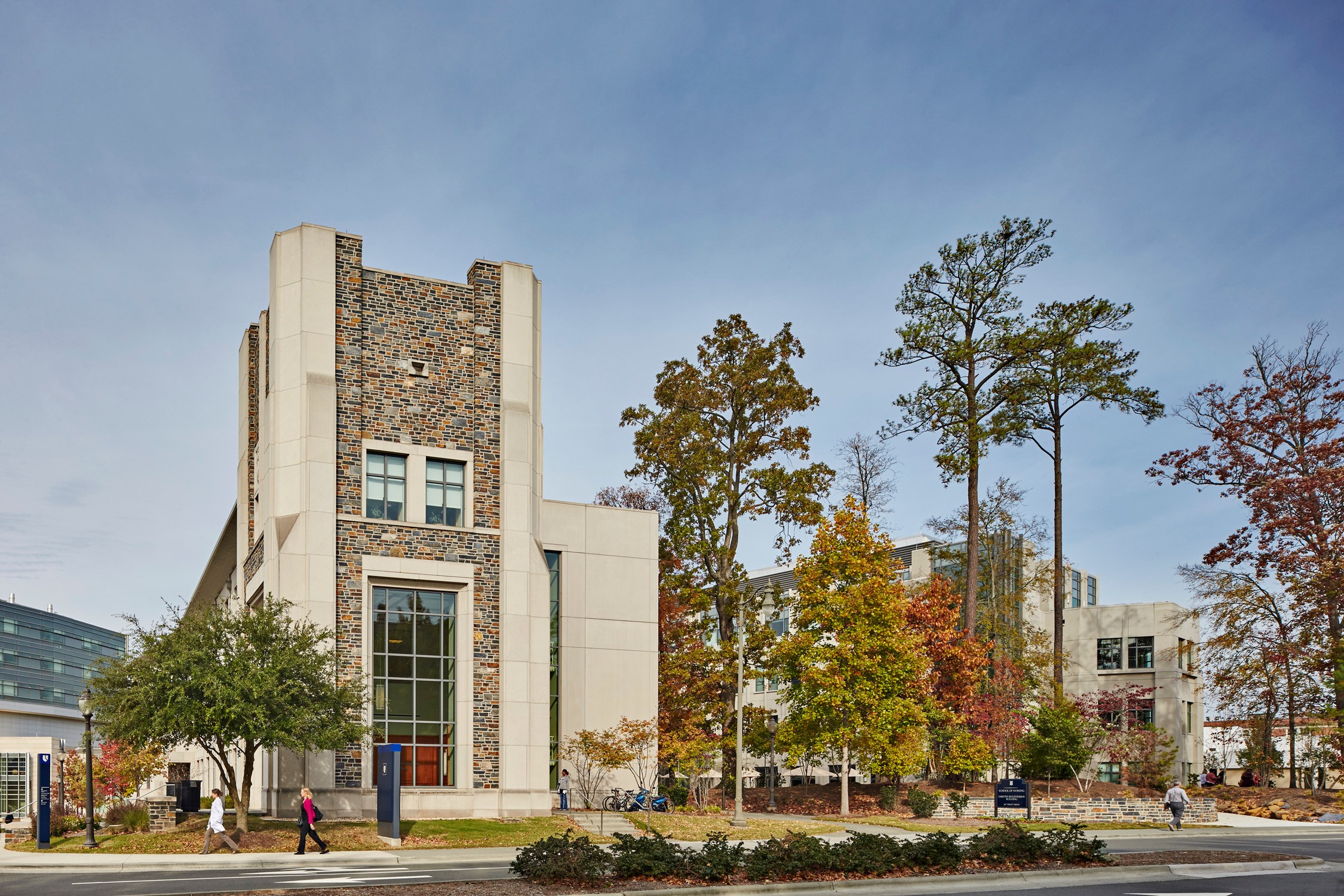
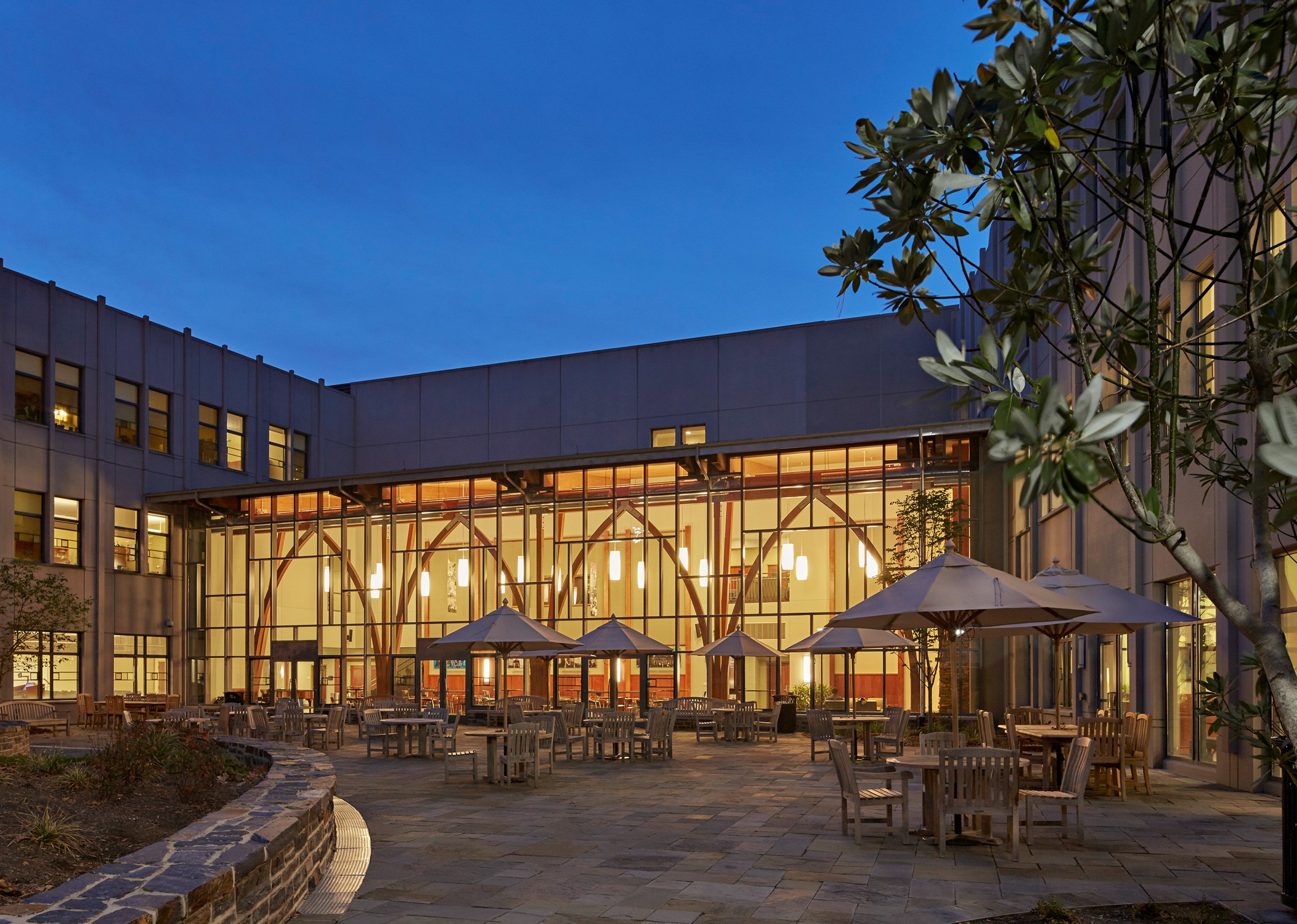

Phase Two: More Room to Grow
During the programming and design of Phase One, it was apparent that the projected growth and success of the school would eventually necessitate an addition. Only five years after its opening of the first phase, the School of Nursing’s enrollment, curricular offerings, and research outperformed the 15-year projections, more than doubling the size of its faculty and student body in less than a decade.
In 2011, Ayers Saint Gross began working with the University to expand the School of Nursing’s presence with an addition to the original building. The new spaces increase student success, complement existing programs, and support new programs and curricular offerings. The addition of another leg to the L-shaped original building creates a U-shaped composition, further surrounding the landscaped wooded garden.

The design celebrates the wooded site and vigorous canopy of trees. Two curved stone–seat walls bracket the terrace and hold the grade while walkways weave through the preserved trees from three sides. To reduce site disturbance, the team employed sustainability strategies to protect existing vegetation, introduce irrigation systems, reduce the development footprint where possible, and incorporate native plants.
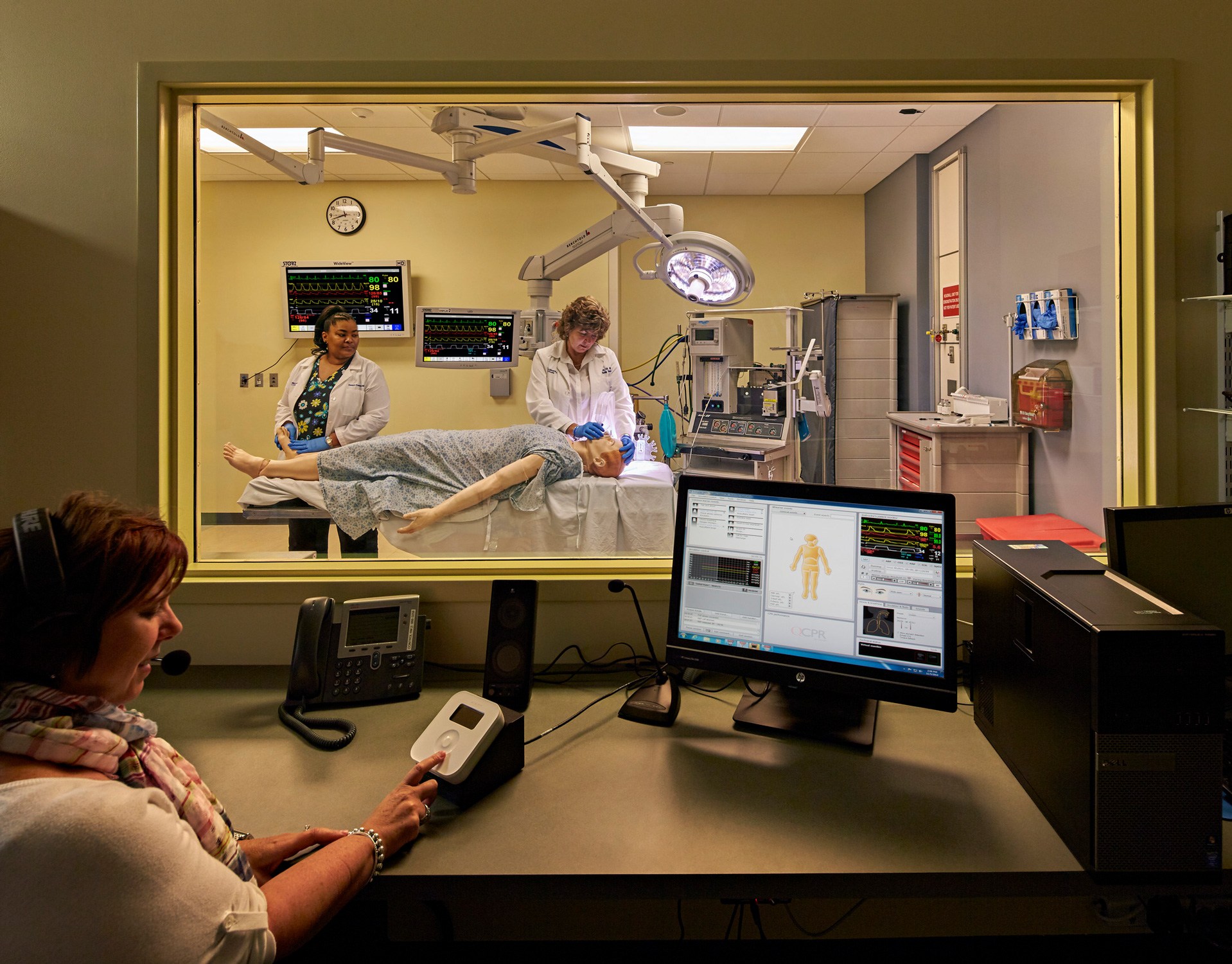
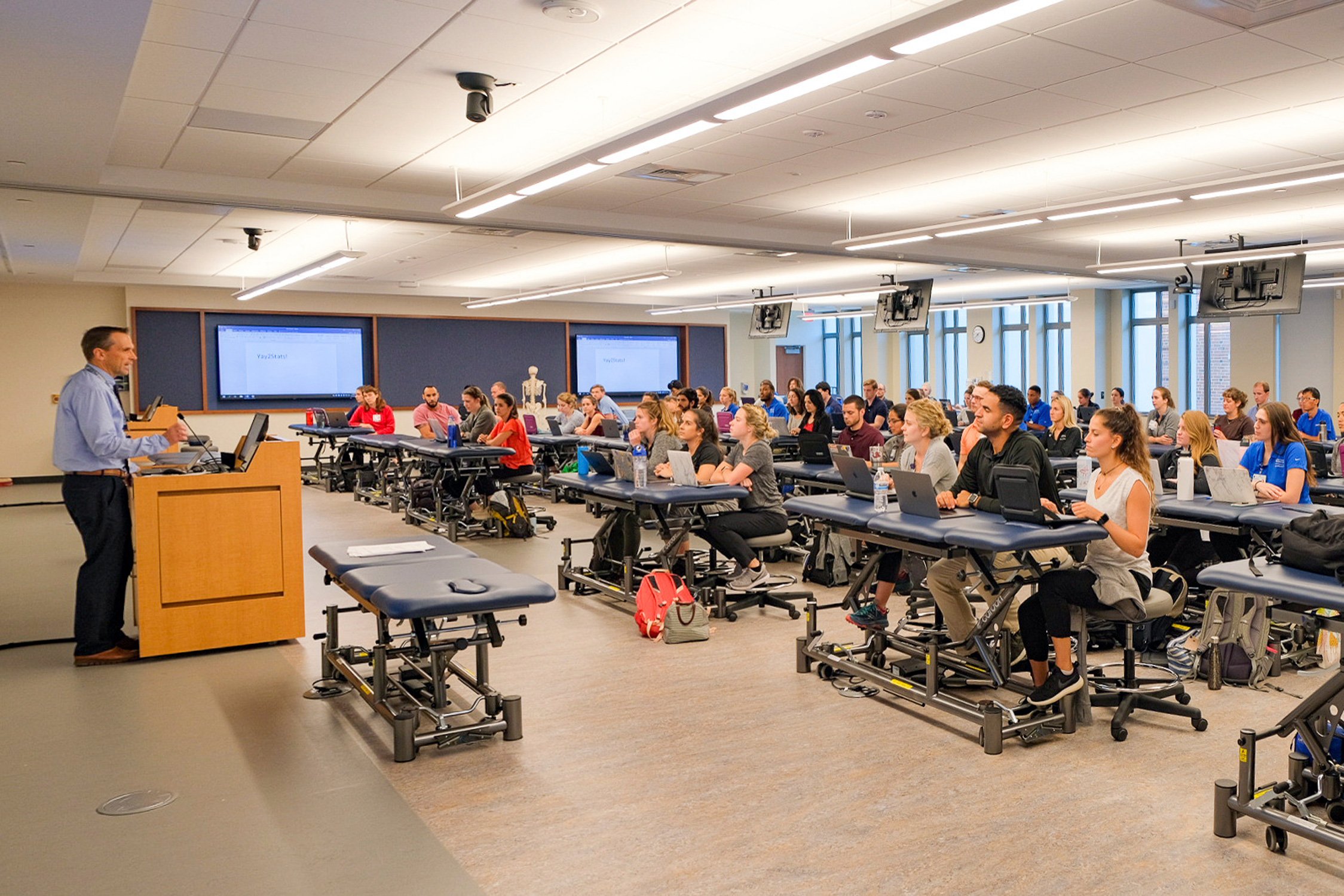
Learning spaces are designed to be flexible, adaptable, and equipped with the latest technology. Large classrooms are paired with smaller seminar rooms to accommodate different teaching and learning styles and curricular requirements. Clinical learning spaces include new skills labs and simulation space, while breakout rooms and formal and informal study spaces offer students more opportunities for study and collaboration.

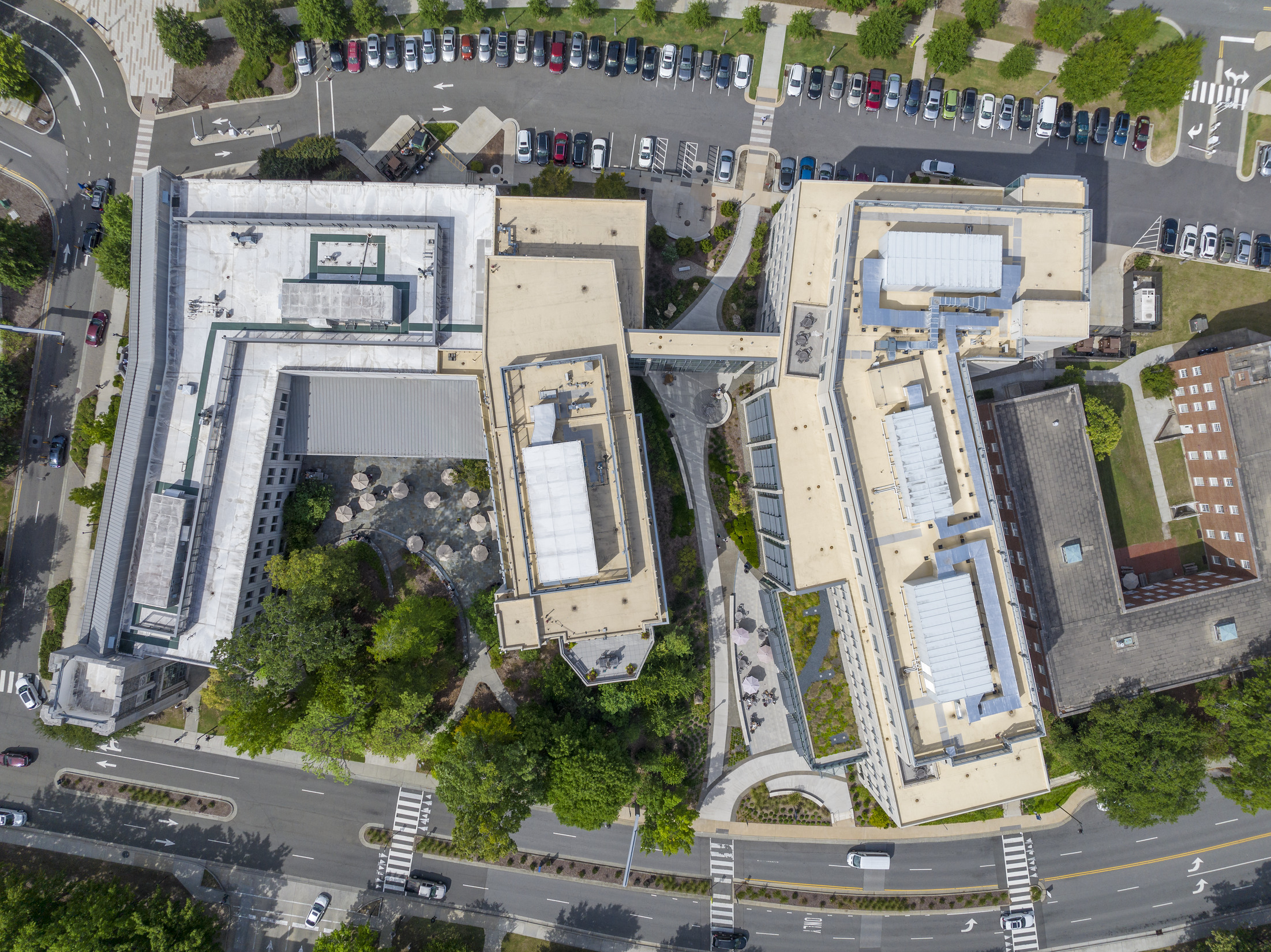
Phase Three: A New Era
In 2016, the Department of Physical Therapy and the School of Medicine (Orthopaedics) sought to expand onto the Medical Campus. A solution was found in the Duke Health Center for Interprofessional Education and Care, which connects to the School of Nursing via a skybridge on multiple levels, bringing together three different programs within the medical center. Using the architectural vocabulary established in the existing building, the addition seamlessly integrates with the original building.
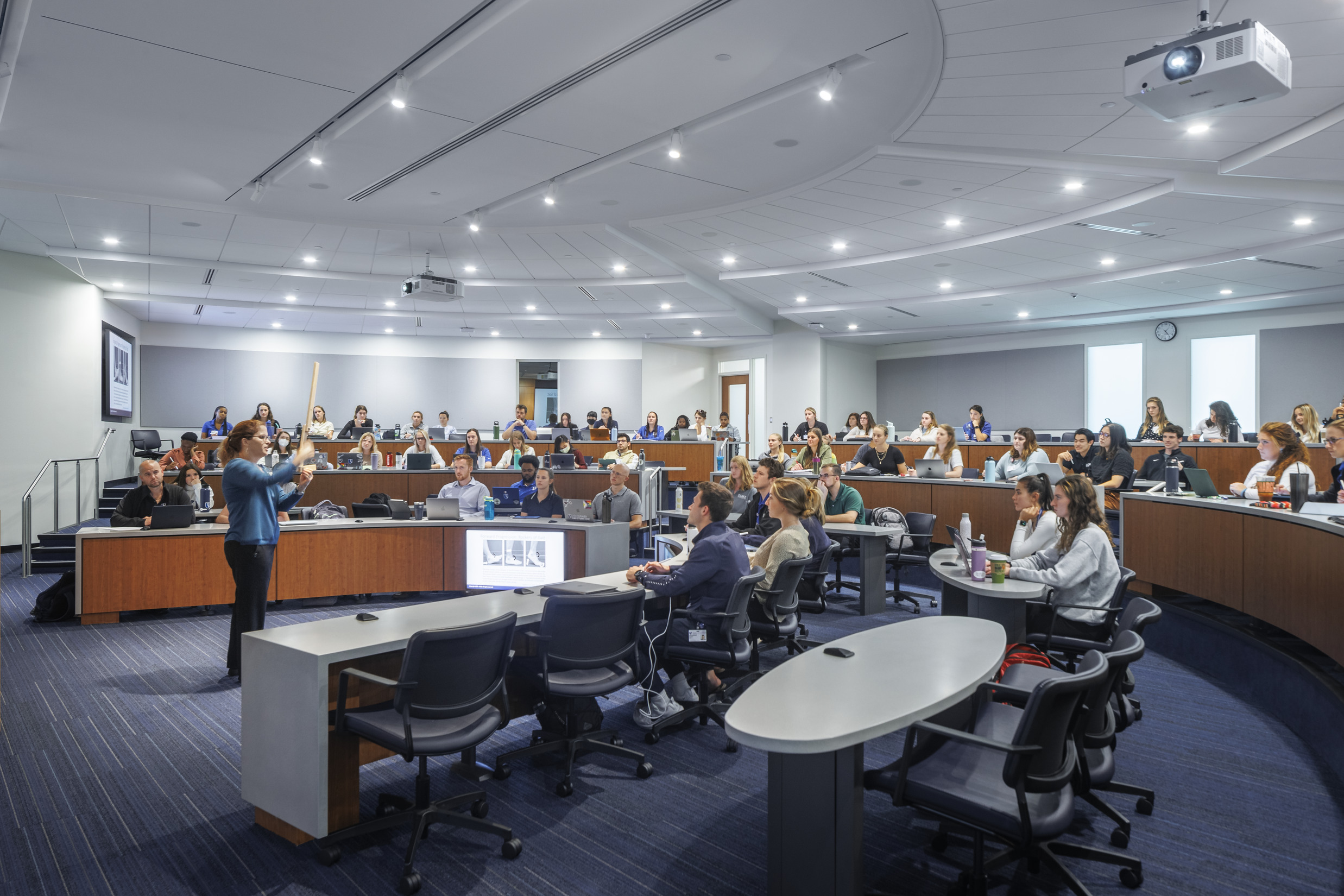
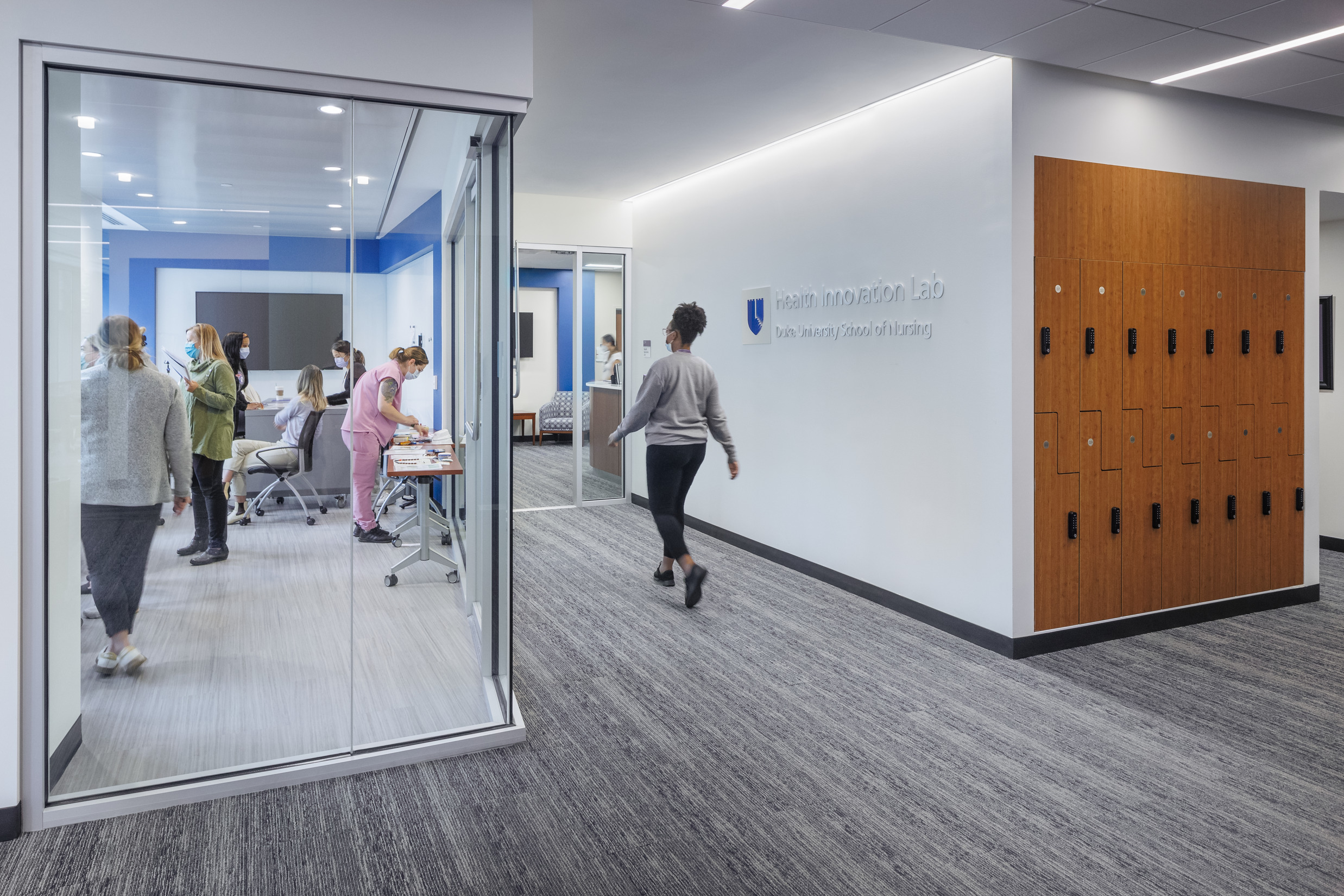

The learning spaces are designed to be flexible, adaptable and are equipped with state-of-the-art technology to accommodate the latest active learning pedagogies. Large, flexible classrooms are paired with smaller seminar rooms to accommodate different teaching and learning styles and curricular requirements, while a Health Innovation Lab offers opportunities for learning and research on display. Clinical learning spaces within the school are expanded, with new skills labs and simulation space.
There is also an increased focus on student support and wellness, with greater access to sunlight and more breakout rooms and formal and informal study spaces offering opportunities for study and collaboration.
